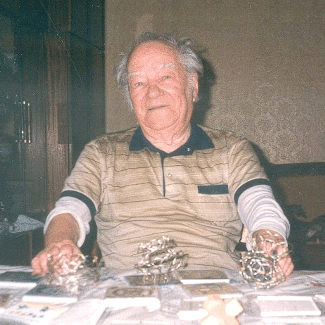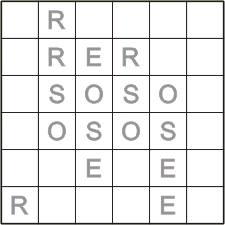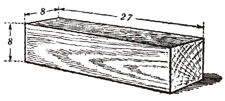 |
| |
A Colorful Journey through Endless Patterns of Quick Wits |
|
|
|
|
|
|
|
Home
/
Masters
/
Boris
Kordemsky |
|
|
|
|
|
|
|
|
Boris Kordemsky
(1907-1999), a Russian teacher and popularizer of
recreational mathematics, is probably the best-selling
author of nonword puzzle books in the history of the
world. Just one of his books, Matematicheskaya
Smekalka (or, Mathematical Quick-Wits), sold more than
a million copies in the Soviet Union/Russia alone, and
it has been translated into many languages. By
exciting millions of people in mathematical problems
over five decades, he influenced generations of
solvers both at home and abroad.
By profession Kordemsky taught math in Moscow at high
schools, a university, and a military academy. For
many years he wrote for Mathematics in School
magazine, in
which his column “Entertaining Page” was very popular
(and useful) among both teachers and students. His
math and puzzle columns also appeared in Science and
Life, Quantum, and Young Technician.
It’s for his book Mathematical Quick-Wits, however,
that Kordemsky is most famous. It first appeared in
1954 (not 1956, as is sometimes stated), just after
the post-Stalin thaw in the Soviet Union, in an
edition of 150,000 copies, which quickly sold out. A
second edition in 1955 sold a similar number, as did a
third edition in 1956. Altogether more than 10
editions have appeared in Russia to date, most
recently in 2000. The book has been translated into
Ukrainian, Bulgarian, Romanian, Hungarian, Czech,
Polish, German, French, Chinese, Japanese, Korean, all
the Baltic languages, English (under the title The
Moscow Puzzles, edited by Martin Gardner, first
published in 1972), and others.
Mathematical Quick-Wits is a giant (500+ pages)
collection of math puzzles of many kinds -- magic
squares, cryptarithms, dissections and other
geometrical challenges, puzzles with dice and
dominoes, matchstick problems, algebraic problems, and
assorted brainteasers. Gardner called it “marvelously
varied.” Knowledgable solvers recognized some of the
puzzles as the original inventions of the American Sam
Loyd, the British Henry E. Dudeney, the Belgian
Maurice Kraitchik, and others. But undoubtedly a
significant number of the puzzles were new.
While the book was hugely entertaining, its purpose
was mainly didactic. In the introduction Kordemsky
said: “All materials in this book are devoted to the
educational aim -- to spur creative thinking, to
further perfection of mathematical knowledge ....”
Besides the above, Kordemsky was the author of one
other great work of puzzles -- Matematicheskiye
Zavlekalki (or, Mathematical Charmers), published
posthumously in 2000. It is a sort of prequel to his
1954 book, in that its puzzles are easier, and,
apparently, more of them are original. Below
are four puzzles by Boris Kordemsky, selected from his
various puzzle books, that we found particularly
charming. |
|
|
|
|
|
|
 |
Boris Kordemsky with a table full of manipulative
puzzles.
|
|
|
|
 |
Roses by Boris Kordemsky.
|
|
|
|
Roses |
|
Divide the square
grid into four equal (and congruent) parts so that
each part contains exactly one each of the letters R,
O, S, and E. |
|
|
|
|
|
|
|
 |
Spider's Maze by Boris Kordemsky.
|
|
|
|
Spider's Maze |
|
A spider sits at
the bottom (point S) of its web, while a fly sits at
the top (F). How many different ways can the spider
reach the fly by moving along the web’s lines -- but
only in the directions indicated by the arrows? |
|
|
|
|
|
|
|
 |
The Wooden Beam by Boris Kordemsky.
|
|
|
|
The Wooden Beam |
|
A wooden beam,
which is perfectly rectangular -- with edges 8, 8, and
27 centimeters, respectively -- is to be sawed into 4
parts out of which a cube can be made. How can this be
done? As the old saying goes, one should draw first
and saw later. |
|
|
|
|
|
|
|
 |
|
|
With Bracket's Help by Boris Kordemsky.
|
|
|
|
With Bracket's Help |
|
Each colon
represents a division sign. Add enough brackets to
each equation to make it correct. |
|
|
|
|
|
|
|
|
|
|
|
|
|
 |
Boris Kordemsky solving manipulative puzzles.
|
|
|
|
|
|
|
|
|
|
|
|
| |
|
|
|
|
|
Last Updated:
October 14, 2008 |
|
|
|
|
|
|
|
|
|
